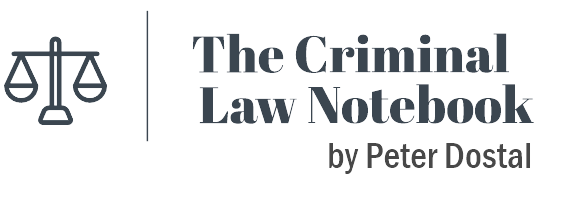Example Jury Selection Instructions: Difference between revisions
| Line 59: | Line 59: | ||
:[2] If anyone has personal knowledge of the circumstances of this case, please come forward. | :[2] If anyone has personal knowledge of the circumstances of this case, please come forward. | ||
|[https://www.nji-inm.ca/index.cfm/publications/model-jury-instructions/preliminary-instructions/instructions-to-the-jury-panel/knowledge-of-the-case/ NJI] | |[https://www.nji-inm.ca/index.cfm/publications/model-jury-instructions/preliminary-instructions/instructions-to-the-jury-panel/knowledge-of-the-case/ NJI] | ||
}} | |||
==Selection and Challenges== | |||
{{Quotation1| | |||
2.1 Choosing Jurors (No General Challenge for Cause) | |||
Note[1] | |||
(Last revised September 2019) | |||
[1] To start jury selection, the clerk will choose (specify number) numbers at random, then read them out loud. If your number is called, please come forward and stand where shown by court staff.[2] | |||
[2] I may ask you to stand aside. If that happens, you may or may not be a juror in this case. Sometimes, a lawyer (or the person charged) will challenge a prospective juror for cause.[3] If that happens to you, I will decide whether or not you should be excused. If you are not asked to stand aside, and are not challenged, you will become a juror in this case. | |||
There are many reasons why you might be asked to stand aside, or might be challenged. If that happens, please do not be offended. Do not feel embarrassed if you are not selected. Do not take it personally. It is a normal part of jury trials. | |||
[3] If I do ask you to stand aside, you will remain in the pool of prospective jurors. As such, you may be called forward a second time, or you may be excused after the jury has been selected. | |||
[1] When selecting more than one jury at a time, this instruction may require some modification. It should be given only where there is no general (as opposed to an individual) challenge for cause. Where there is a general challenge for cause, Preliminary 2.2 should be given. | |||
[2] At present, there is some uncertainty over the procedure to be followed under the new legislation. Section 635(1), as amended, reads as follows: | |||
Order of challenges | |||
635 (1) The accused shall be called on before the prosecutor is called on to declare whether the accused challenges the first juror for cause, and after that the prosecutor and the accused shall be called on alternately, in respect of each of the remaining jurors, to first make such a declaration. | |||
Prior to amendment, this provision governed the order of peremptory challenges as well as challenges for cause. Now that peremptory challenges have been abolished, the only basis on which counsel can challenge a prospective juror is challenge for cause under s. 638 of the Code. In some cases, the judge will authorize a challenge to all prospective jurors based, for example, on race or publicity. In that instance, section 2.2 of these instructions will apply. However, s.638 also contemplates that an individual juror may be challenged for cause on the delineated grounds. This has traditionally been a rare occurrence, perhaps because counsel have had access to peremptory challenges. | |||
The question is whether the use of the word “shall” in s. 635(1) requires that counsel be called upon to indicate, for each prospective juror, whether there is a challenge for cause under s. 638 of the Code. Or does it suffice for counsel to simply advise if and when any such challenge arises? Does the prospective juror look at the accused and the accused look at the juror as in the past? Does that serve any purpose in the absence of peremptory challenges? Do counsel have the right to make submissions on whether a prospective juror is stood aside? The precise parameters of counsel’s participation in the new process have yet to be determined. We anticipate that case law will develop as cases unfold, and we will update these instructions accordingly. | |||
[3] The law is clear that a challenge for cause relating to partiality must be based “on a ground sufficiently articulated in the application” that there is in the case of some potential jurors a “realistic potential for . . . partiality” (R. v. Sherratt, 1991 CanLII 86 (SCC), [1991] 1 S.C.R. 509, at p. 536). Where the issue is partiality, the application will likely be aimed at the jury panel as a whole, based on such factors as the race of the accused or pre-trial publicity. The law does not presently contemplate individual challenges for cause based on partiality. If a prospective juror presents with obvious partiality (such as knowledge of participants), the prospective juror may be excused under s. 632 of the Code. | |||
Other bases for challenge for cause concern citizenship, criminal convictions, physical ability, and facility with language (s. 638). It is conceivable that an individual juror might be challenged on one of these bases, though such events would likely be rare. Therefore, while this instruction refers to the possibility of an individual challenge for cause, we do not contemplate that this will be a common occurrence. | |||
|[ NJI] | |||
}} | }} | ||
